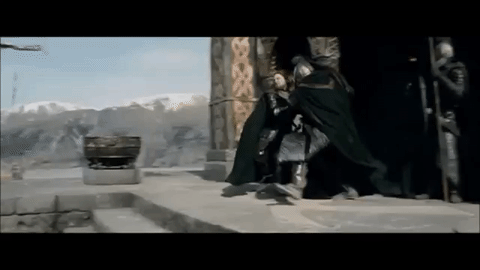

He was the chief of a group of goblins who lived in Goblin-town near the High Pass. He was a very large creature with a huge head. After nearly eight hours in Jackson’s Middle-Earth, I’m ready to retire to a Hobbit-hole, too.The Great Goblin was a goblin chieftain of the Misty Mountains. “You are really just a little fellow, in a wide world,” Gandalf tells Bilbo as he inevitably returns to the Shire toward the end of The Battle of the Five Armies.
#THE HOBBIT MOVIE KING UNDER THE MOUNTAIN TROLL SERIES#
In The Hobbit movies, it starts out big, only gets bigger, but the only payoff is a series of increasingly frenzied run-ins with orcs. In Tolkien’s story, a small, comfortable world slowly opened into a bigger, wilder, and stranger one, where the payoff is exploration itself. But in turning a little story about a little dude who goes on a big quest into a huge story about a little dude who goes on an Awesome Chase-and then freighting it with enough continuity to choke a dragon-Jackson never manages to convey the sensation that Tolkien did. What Jackson’s The Hobbit ought to have delivered was a sense of wonder, the same one that’s enticed generations of middle-school readers (and which even Rankin/Bass’ slight 1977 cartoon adaptation managed to capture). ever green-lights a film about Harry Potter’s dad and his fellow Hogwarts marauders, Pace would make for a decent Young Voldemort. As Thranduil, elven king of the Woodland Realm, the actor manages to land operatic lines like “You started this-you will forgive me if I finish it!” After seeing him in this role and as the space zealot Ronan the Accuser in Guardians of the Galaxythis summer, I suspect that if Warner Bros. And while I would watch a whole movie of Cumberbatch-as-Smaug nattering on about the gold standard, Lee Pace proves you don’t need teeth like swords to chew up scenery. The performances mostly remain humane, especially Freeman as Bilbo and Ian McKellen as Gandalf. The aesthetics of Jackson’s Middle-Earth remain stunning, at least, thanks to Andrew Lesnie’s whooshing cinematography, battle scenes that look as frenzied and detailed as a Bosch painting, and a small handful of new locales like the orc stronghold Gundabad, where for some reason the architecture has a Southwestern modernist bent. And he must leave each character where continuity requires, connecting this film’s events to those in 2001’s The Fellowship of the Ring, which is set about 60 years after The Hobbit. Of course he must deliver the melee promised in the film’s title, which rivals, in screen minutes if not majesty, the two great clashes of his Lord of the Rings movies-the Battle of Helm’s Deep from The Two Towers and the Battle of the Pelennor Fields from The Return of the King. Having already told much of The Hobbit in the first two movies-you know, Bilbo Baggins (Martin Freeman) and dwarves and wizards and orcs and elves and goblins and Gollum and rings and wraiths and at last Smaug, the dragon who likes to talk to his food-Jackson hasn’t left himself much to do. Which are what, exactly? All together, these films, which began in 2012 with the bloated An Unexpected Journey and continued last year with the fleeter, more fun The Desolation of Smaug, spend seven hours and 54 minutes adapting Tolkien’s brisk 300-page book, the chipper prequel to his epic Lord of the Rings trilogy.


 0 kommentar(er)
0 kommentar(er)
